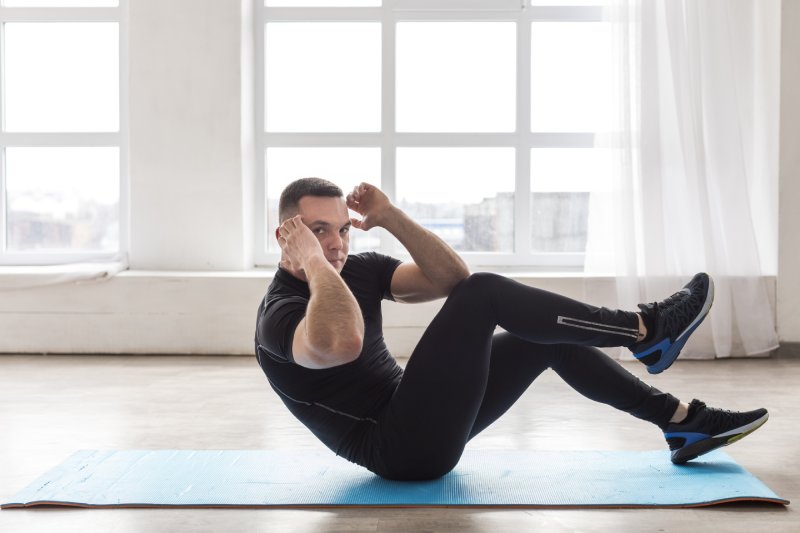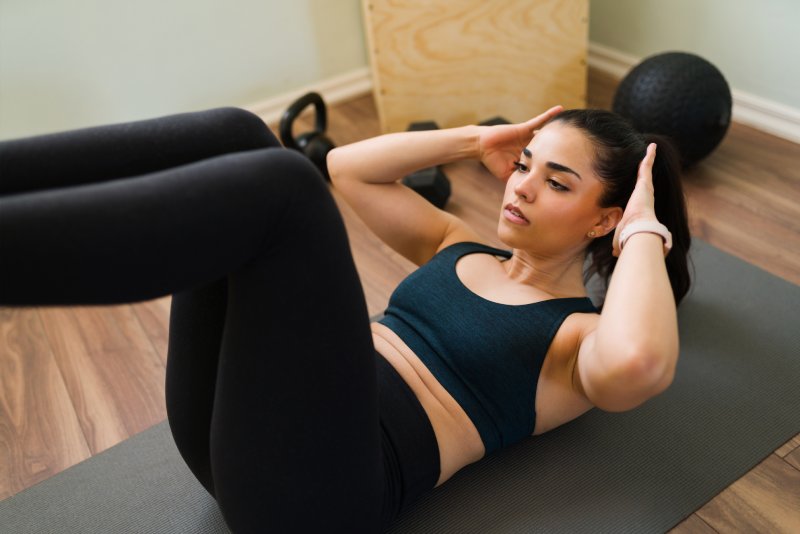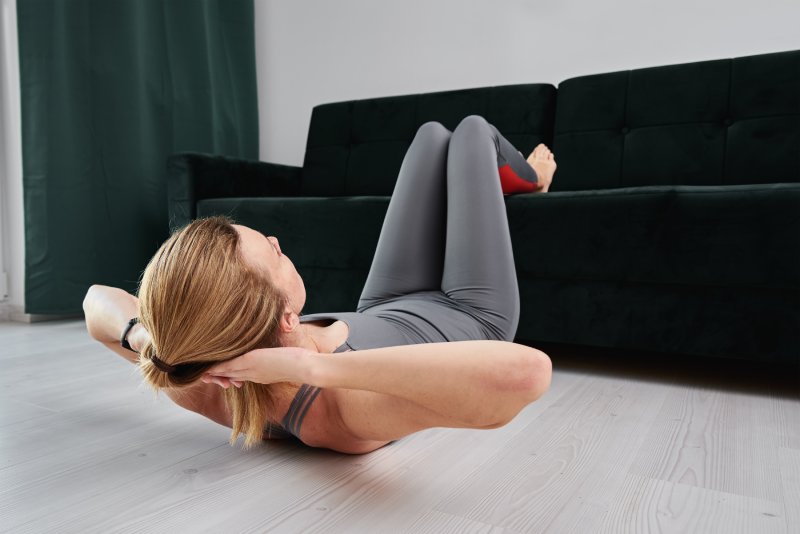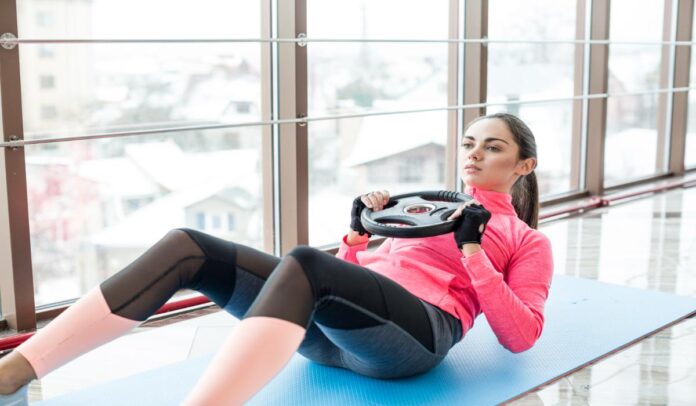While crunches are a common exercise for working the abdominal muscles, they can have negative effects on back and neck health and can be uncomfortable for some people. Therefore, more effective and safe alternative movements that can be done instead of crunches or together with crunches can be preferred. These movements work the abdominal muscles more comprehensively, helping to strengthen the core area without straining the spine and neck area.
Basic movements such as plank, leg raise, Russian twist, bicycle crunch, dead bug and mountain climber are considered more effective than crunches. Plank activates all core muscles and works especially the abdominal and back muscles in a balanced way.
Leg raise targets the lower abdominal muscles, while Russian twist strengthens the side abdominal muscles. Bicycle crunch, unlike crunches, works both the upper and lower abdominal muscles dynamically. Dead bug movement stabilizes the spine and increases core control. Mountain climber contributes to fat burning with its cardio effect as well as abdominal muscles.
These alternative movements are more functional and safer exercises compared to crunches. They work all aspects of the core muscles, increasing body balance and endurance. In addition, most of these movements can be done without equipment and can be adapted to different levels. Thus, it is possible to effectively strengthen the abdominal area without the hassle of doing crunches.

Anatomy and Functions of Core Muscles
The core muscles are a group of muscles located in the center of the body that support the spine, pelvis, and ribcage. These muscles have important functions such as controlling movement, maintaining balance, and maintaining posture. The anatomy of the core muscles is quite complex and consists of deep and superficial muscle layers. The main core muscles include the rectus abdominis, oblique externus and internus, transversus abdominis, erector spinae, multifidus, and diaphragm.
The rectus abdominis is a muscle group known as the “six-pack” located on the anterior abdominal wall. This muscle allows the trunk to bend forward and gives shape to the abdominal area. The oblique externus and internus muscles are located on the sides of the abdomen and play an active role in the rotation and side-bending movements of the trunk. The transversus abdominis is the deepest abdominal muscle and stabilizes the spine by increasing intra-abdominal pressure.
The erector spinae muscle group is located on the back of the spine and allows the trunk to stand upright. The multifidus muscles are deep muscles that control the small movements of the spine and play an important role in the stability of the spine. The diaphragm muscle is a respiratory muscle and plays a supportive role by regulating intra-abdominal pressure within the core musculature.
The functions of the core muscles are not limited to movement; they also provide stability to the spine and pelvis. These muscles help the body stay balanced during daily activities and protect the spine during heavy lifting or sudden movements. Weakness in the core muscles can lead to back pain, poor posture, and limited movement.
Strengthening the core muscles through exercises is important for overall functionality and reducing the risk of injury. Moves such as planks, bridges, side planks, and dead bugs effectively work the core muscles. A strong core improves athletic performance, improves posture, and optimizes body mechanics.
The anatomy and functions of the core muscles are critical to body health. Consciously strengthening this muscle group not only improves sports performance but also the quality of daily life. Working the core muscles in a holistic manner is one of the basic approaches in both preventive health and rehabilitation processes.

6 Core Exercises That Are More Effective Than Crunches
Although crunches are one of the most well-known exercises for working the abdominal muscles, they can pose some risks, especially in terms of neck and waist health. Therefore, it is useful to focus on alternative exercises that work the core area more safely and effectively, apart from crunches. The core muscles include not only the abdominal area, but also the muscles around the back, pelvis and hips. Therefore, core exercises should target all these areas in a balanced way.
The first effective exercise is the plank. Planks work the abdominal, back and shoulder muscles at the same time, stabilizing the core of the body. Supporting the body weight while maintaining posture increases the endurance of the core muscles. Planks also put less pressure on the spine, unlike forward bending movements such as crunches.
The second important movement is the leg raise exercise. This movement targets the lower abdominal muscles and helps strengthen the lower belly area in particular. Lying on your back and keeping your legs straight, lifting them up activates the deep parts of the abdominal muscles. It also works with the hip flexors to support lower body stability.
The third exercise is the Russian twist. This exercise, performed in a seated position, strengthens the obliques, which are the side abdominal muscles. The movement of turning the torso to the right and left requires balance and rotational strength. Unlike sit-ups, the Russian twist increases spinal mobility and effectively works the sides of the abdominal muscles.
The fourth move is the bicycle crunch. Although it looks similar to a crunch, the bicycle crunch works the abdominal muscles more dynamically and effectively. While lying on your back, bringing the opposite elbow to the opposite knee activates both the upper and lower abdominal muscles by rotating the torso. This move also helps burn fat by gently working the cardiovascular system.
The fifth important exercise is the dead bug exercise. This exercise improves the coordination and stability of the back and abdominal muscles. While lying on your back, slowly lowering and raising the opposite arm and leg at the same time increases spinal stability. The dead bug provides deep strengthening of the core muscles without damaging the spine.

The mountain climber exercise not only works the core muscles but also provides a cardio effect. While the hands and feet are on the ground, the knees are quickly pulled to the chest. This exercise quickly activates the abdominal muscles while also increasing balance, endurance and explosive power. As an alternative to crunches, these exercises develop the core area in many ways and provide a safe and functional workout.



